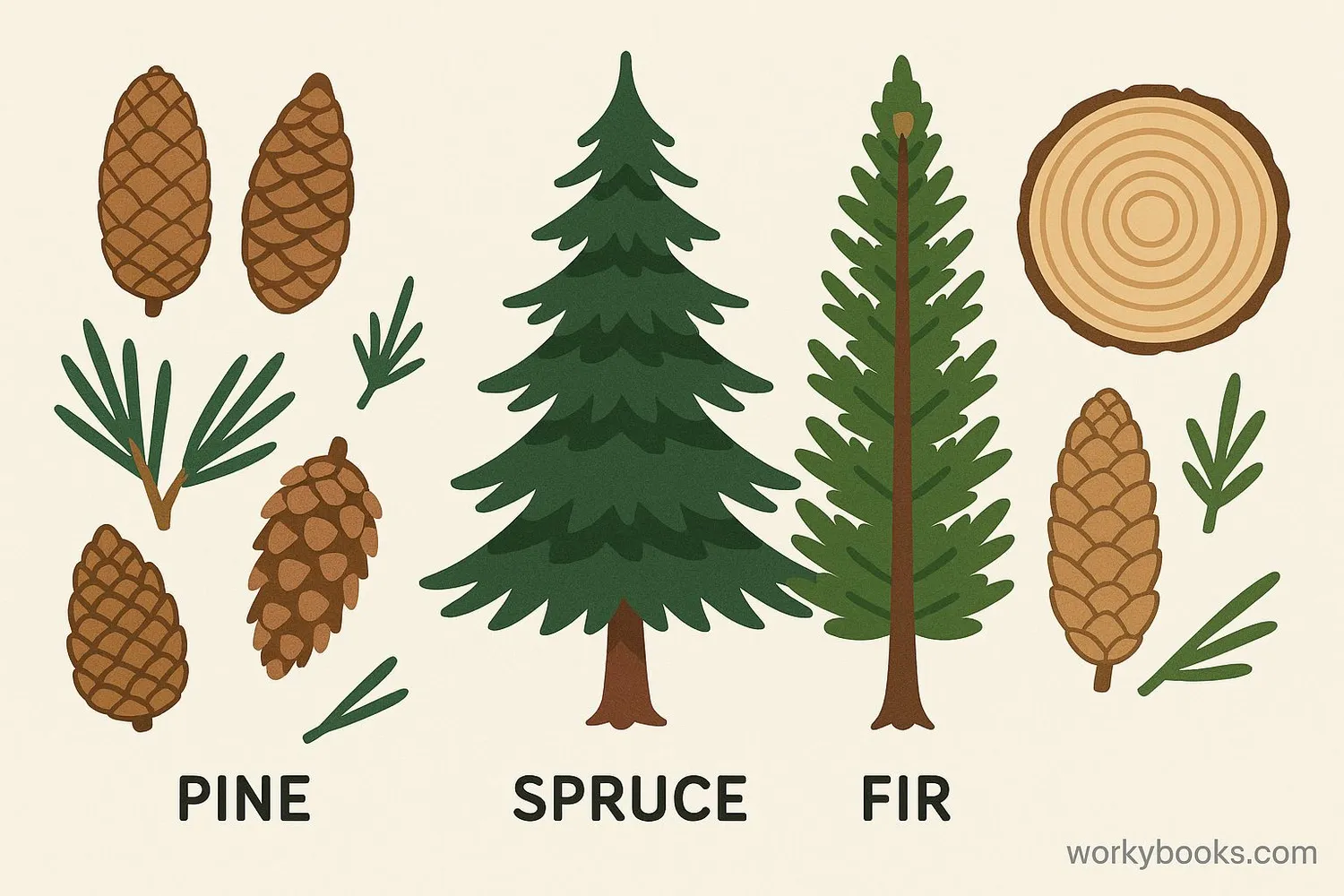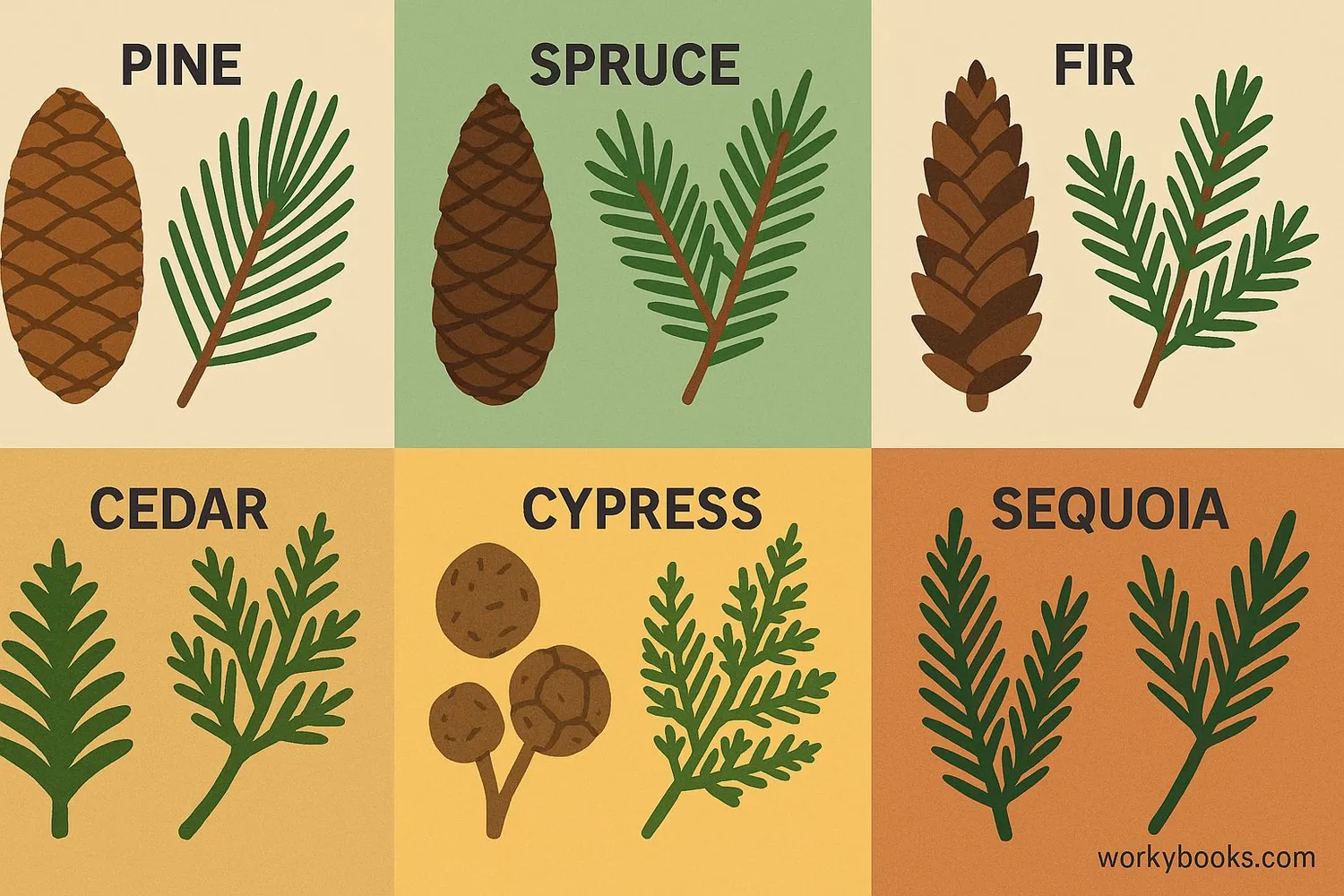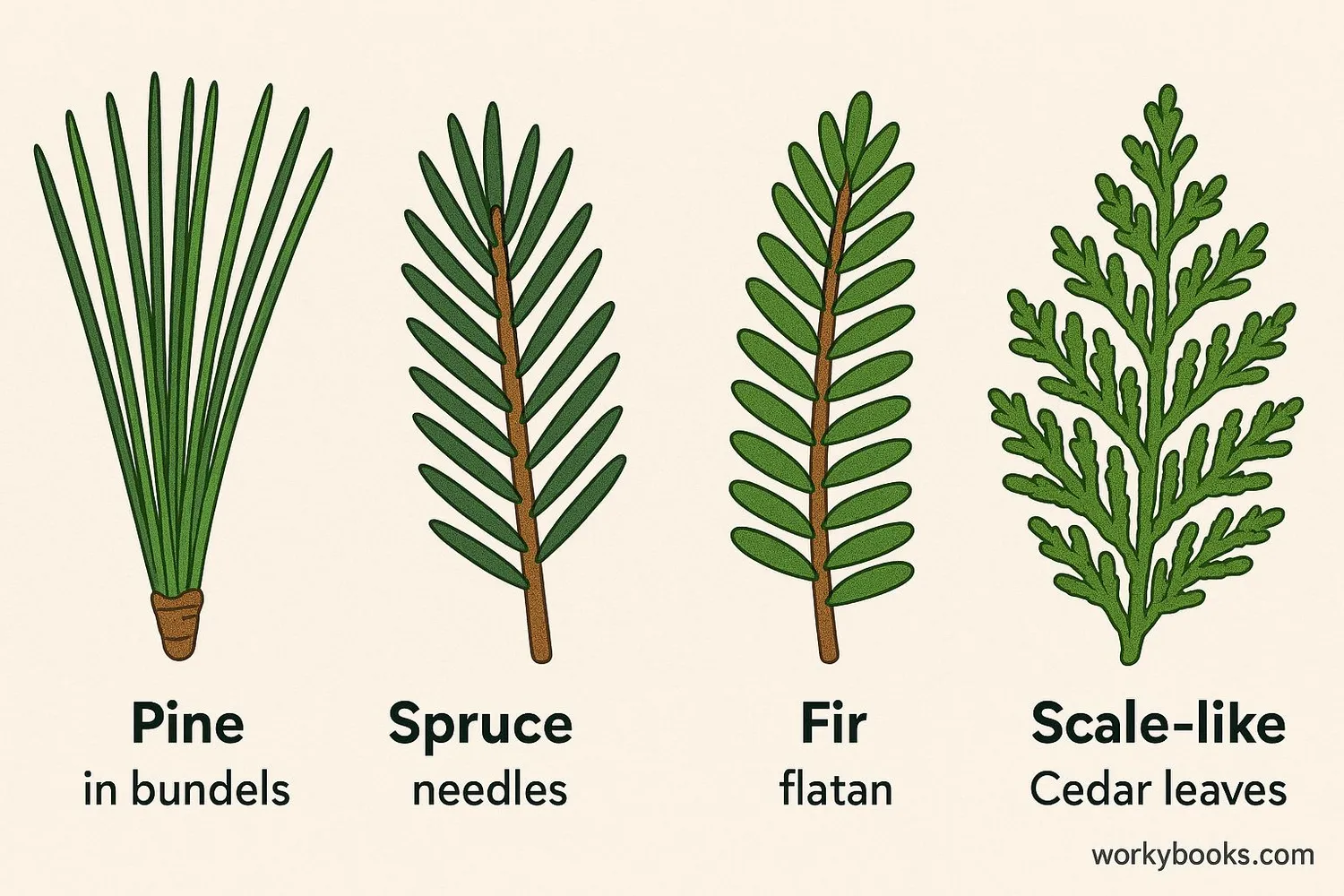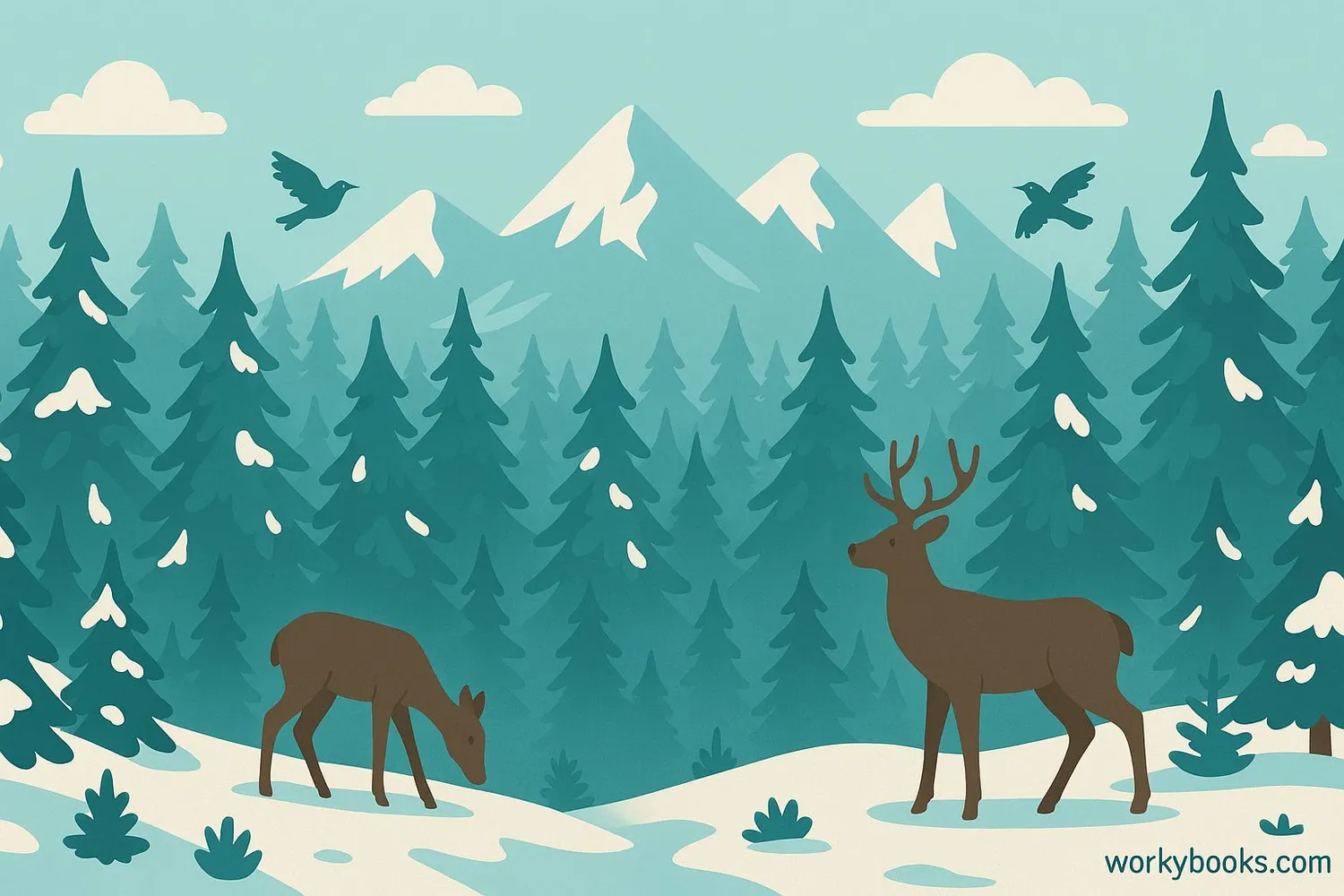Conifer - Definition, Examples, Quiz, FAQ, Trivia
Learn about these amazing evergreen trees that stay green all year long!
What are Conifers?

Conifers are a special group of trees and shrubs that produce cones instead of flowers. They're known as evergreen trees because most keep their green leaves all year long! The word "conifer" comes from Latin and means "cone-bearer."
These amazing trees have been around since the time of dinosaurs! Conifers grow in many parts of the world and include familiar trees like pines, spruces, firs, and cedars.
Conifer Characteristics
• Most are evergreen (stay green year-round)
• Produce cones instead of flowers
• Have needle-like or scale-like leaves
• Often have pyramid-shaped growth
• Many produce fragrant sap called resin
Example: The Pine Tree
Pine trees are the most common conifers. They have long needles that grow in bundles and produce pine cones that can be as small as your thumb or as big as your forearm!
Types of Conifers

There are over 600 types of conifers! Let's explore some of the most common families:
Pine Trees
Long needles in bundles, woody cones, includes white pine and ponderosa pine
Spruce Trees
Short, sharp needles, hangs cones, includes blue spruce and Norway spruce
Fir Trees
Flat needles, upright cones, includes Douglas fir and balsam fir
Cedar Trees
Scale-like leaves, fragrant wood, includes eastern red cedar
Redwoods
The tallest trees on Earth, can grow over 350 feet tall!
Facts About Giant Sequoias
Giant sequoias are the largest trees by volume! The General Sherman tree is 275 feet tall and over 36 feet in diameter - that's wider than most city streets!
Conifer Leaves

Unlike broadleaf trees, conifers have special leaves adapted for cold weather and water conservation:
Needle Shape
Reduces water loss in cold or dry conditions
Waxy Coating
Prevents water evaporation from leaves
Evergreen
Allows photosynthesis year-round
Why Needles Instead of Leaves?
Conifer needles are specially designed to survive cold winters. Their narrow shape reduces water loss, the waxy coating prevents drying out, and their dark green color helps absorb sunlight even in winter!
Coniferous Forests

Coniferous forests, also called taiga or boreal forests, cover huge areas in cold northern regions. They form a green belt around the Earth just south of the Arctic tundra.
These forests are vital to our planet:
Oxygen Production
Conifers produce oxygen year-round
Wildlife Habitat
Home to bears, deer, owls, and many birds
Wood Products
Source of lumber, paper, and other materials
Forest Facts
The boreal forest that circles the Northern Hemisphere is the world's largest land ecosystem! It covers about 17% of the Earth's land area and stores more carbon than tropical rainforests.
Conifer Knowledge Quiz
Test what you've learned about conifers with this quiz! Answer all 5 questions to see how much you know.
Frequently Asked Questions
Here are answers to some common questions about conifers:
Tree Trivia
Discover some amazing facts about conifers!
Height Champions
The tallest tree in the world is a coast redwood named Hyperion that stands 380 feet tall - that's taller than the Statue of Liberty!
Ancient Giants
Bristlecone pines are the oldest non-clonal trees on Earth. The oldest known living tree is over 4,800 years old - it was already growing when the pyramids were built!
Wildlife Support
Coniferous forests provide habitat for many animals including moose, bears, wolves, owls, and crossbills - birds with specially adapted beaks for opening pine cones!
Space Trees
In 1971, astronaut Stuart Roosa carried hundreds of tree seeds (including conifers) to the moon and back during the Apollo 14 mission. These "moon trees" were later planted across the US!


